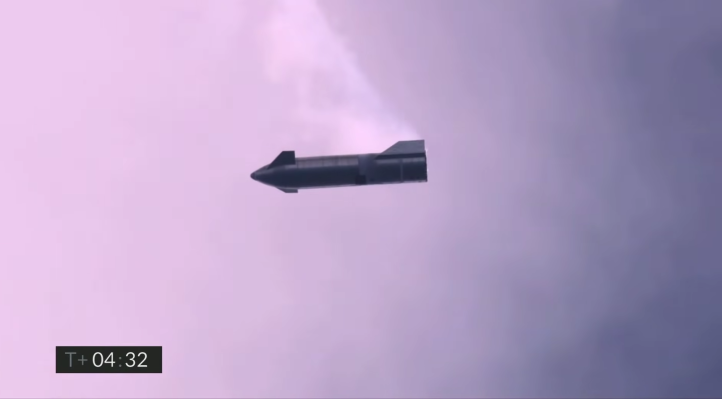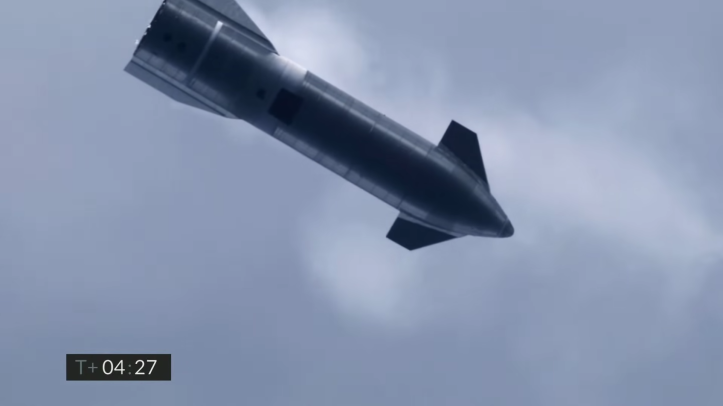
04 March 2021 | James Porteous | Clipper Media | https://linktr.ee/jamesporteous
Below is video of the latest test of a portion of the SpaceX Starship that will eventually take humans to Mars.
The Starship was expected to reach 10km, rotate on its side and then slowly turn vertical and land.
In previous tests it did achieved most of these goals but then crash-landed instead of remaining upright.
On this occasion it did indeed ‘land,’ but blew up later due to a leak.
If you have heard about this test at all, you were likely told very little other than it exploded – again.
But watch the footage here. It is hard to adequately explain just how extraordinary these flights are.
Watch as it literally ‘coasts’ on its way up, then turns on its side before slowly landing.
This could barely be achieved with special SPX in a movie.
And it is worth noting, as well, that the attempt to launch earlier was aborted at the precise moment it was expected to lift off.
There was no month-long ordeal of dragging it back to the hanger, refueling, bringing it back, trying again.
Instead, the Space X team studied the problem, fixed it, refueled the craft, where it stood, and tried again!
Extraordinary.
I know that it is fashionable to shat on Elon Musk for -well, everything- and also fashionable to constantly push the shock doctrine-based ‘we are doomed to fail at everything we try narrative,’ but that any of us are able to see achievements on this scale in our lifetime is beyond imagination.
Watch Video Below
Earlier, Space X wrote:
As early as Wednesday, March 3, the SpaceX team will attempt a high-altitude flight test of Starship serial number 10 (SN10) – our third high-altitude suborbital flight test of a Starship prototype from SpaceX’s site in Cameron County, Texas. Similar to the high-altitude flight tests of Starship SN8 and SN9, SN10 will be powered through ascent by three Raptor engines, each shutting down in sequence prior to the vehicle reaching apogee – approximately 10 km in altitude. SN10 will perform a propellant transition to the internal header tanks, which hold landing propellant, before reorienting itself for reentry and a controlled aerodynamic descent.
The Starship prototype will descend under active aerodynamic control, accomplished by independent movement of two forward and two aft flaps on the vehicle. All four flaps are actuated by an onboard flight computer to control Starship’s attitude during flight and enable precise landing at the intended location. SN10’s Raptor engines will then reignite as the vehicle attempts a landing flip maneuver immediately before touching down on the landing pad adjacent to the launch mount.
A controlled aerodynamic descent with body flaps and vertical landing capability, combined with in-space refilling, are critical to landing Starship at destinations across the solar system where prepared surfaces or runways do not exist, and returning to Earth. This capability will enable a fully reusable transportation system designed to carry both crew and cargo on long-duration, interplanetary flights and help humanity return to the Moon, and travel to Mars and beyond.
Given the dynamic schedule of development testing, stay tuned to our social media channels for updates as we move toward SpaceX’s third high-altitude flight test of Starship!

![]()
